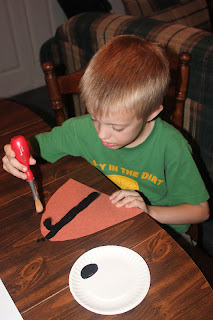American
Flag
Discuss:
The American Flag is red, white and blue and has 13 stripes and 50
stars.
Its Symbols-
The stripes represent the 13 original colonies.
The 50 stars represent the number of states there are now.
The colors of the flag have meaning as well:
Red symbolizes Hardiness and Valor (the qualities of a hero or heroine; exceptional or heroic courage when facing danger; especially in battle)
White symbolizes Purity and Innocence (the state of being free from sin or moral wrong; lacking a knowledge of evil)
Blue represents Perseverance and Justice (the administration of law; the act of determining rights and assigning rewards or punishments)
Proper Display-
The flag should be displayed from sunrise to sunset.
- If the flag is displayed at night it should be illuminated.
Never allow the flag to touch the ground or the floor.
When displayed on a wall or window the blue field should be in the upper left corner.
The flag should be raised quickly and lowered carefully.
The flag is often flown at half-staff to show respect for someone who has died. When flown at half-staff, the flag should be raised to the top for an instant and then lowered to the half-staff position. The flag should also be raised to the top before it is lowered at the end of the day.
Read:
The American Flag
by Tristan
Boyer Binns
Comprehension
Questions:
- What colors are on the American Flag? Red, white and blue
- What does each color stand for? Red for Valor, White for Purity, and Blue for Justice
- What do the 13 stripes and 50 stars stand for? 13 stripes for the 13 original colonies and 50 stars for the 50 states.
The Pledge of Allegiance
We used this page to talk more about The Pledge of Allegiance.
Edible
Celebration Flag
INGREDIENTS:
- 1 jar marshmallow cream
- 8 ounce cream cheese
- Strawberry Pop Tart (unfrosted)
- Fresh red raspberries or Fresh strawberries
- Fresh blueberries
DIRECTIONS:
- In a small bowl stir together cream cheese, and marshmallow cream until smooth.
- Spread on top of the Pop Tart..
- Arrange 9 blueberries on top left corner of each toaster pastry to make "stars" on flags.
- Lengthwise quarter raspberries or halve strawberries and thinly slice.
- Arrange raspberries or strawberries on top of toaster pastries to make "red stripes" on flags.
The Flag of the United States of America
We used this page to review what we have learned about The Flag of the United States of America.
Popsicle Stick Flag
Materials:
- Red, Blue and White Paint
- Paintbrush
- 8 Popsicle Sticks
- Cardstock
- Strips of Rhinestones
- Craft Magnet
Directions:
- Paint the sticks white and red (paint half of 3 sticks blue)
- Once they dried glue them onto cardstock. (Blue goes in the top left)
- Stick the rhinestones on the blue to use as the “stars”.
- Stick a magnet on the back.










































